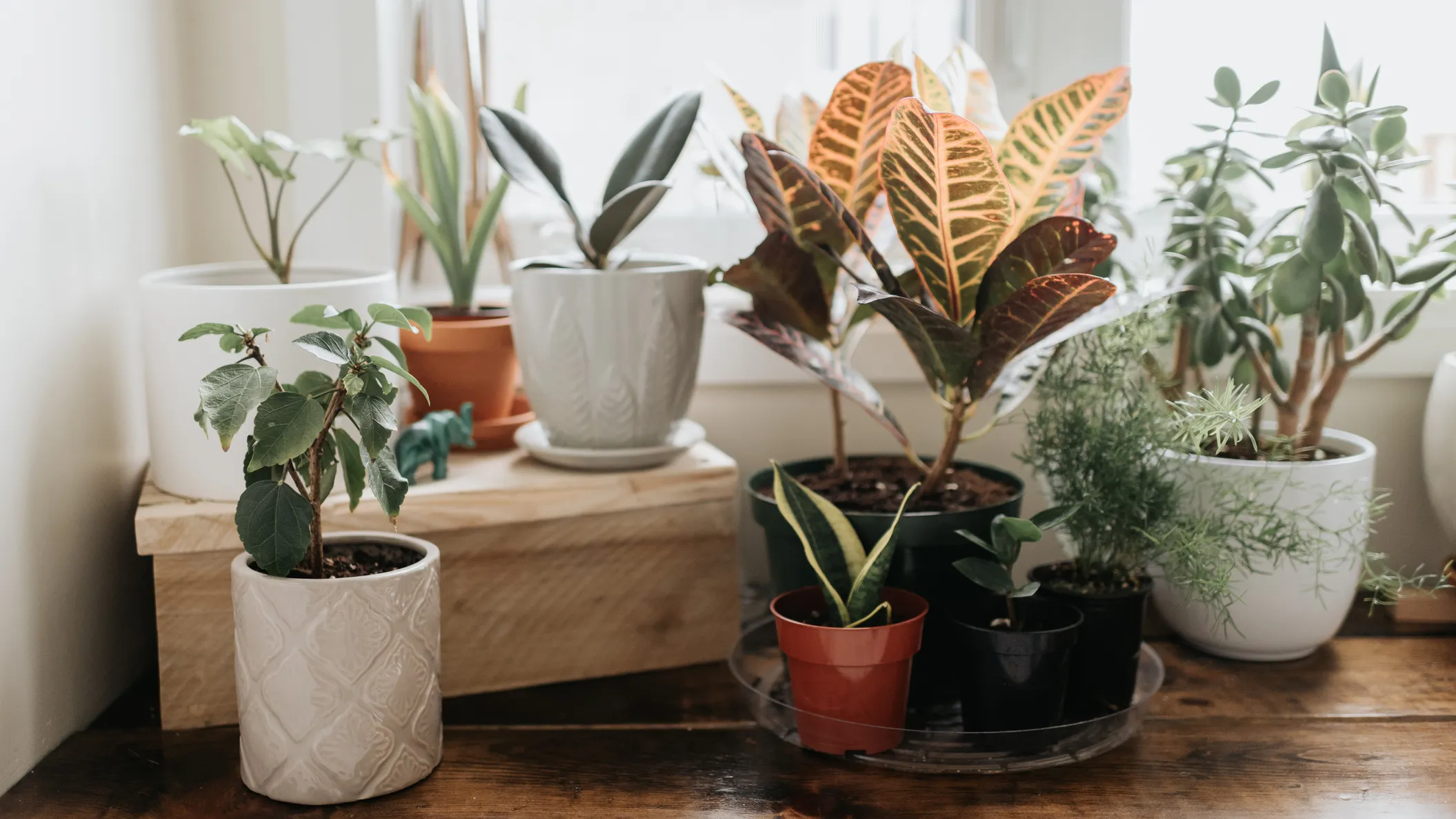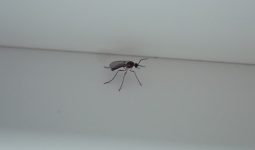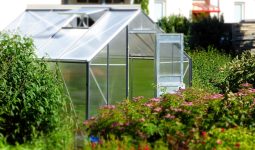Here’s a secret that might surprise you: the most successful plant parents aren’t the ones with green thumbs—they’re the ones who’ve learned to work with their plants’ natural resilience rather than against it.
If you’ve ever watched a houseplant slowly decline despite your best efforts, you’re not alone. The truth is, many of us are killing our plants with kindness, overwatering and fussing when what they really need is benign neglect.
You’re about to discover thirteen remarkable plants that thrive on minimal attention, transforming your living space into a green sanctuary without demanding daily devotion.
These aren’t just surviving plants—they’re thriving, air-purifying powerhouses that’ll make you look like a botanical genius while barely lifting a finger.
Jade Plants
Think of jade plants as the ultimate houseplant for busy people—they’re practically designed to thrive on neglect. These glossy-leaved succulents store water in their thick, fleshy leaves, which means they can go weeks without a drink and actually prefer it that way.
What makes jade plants particularly brilliant is their ability to communicate their needs clearly. When they’re thirsty, their leaves become slightly wrinkled and less plump. When they’re happy, they develop a beautiful reddish tinge along their leaf edges, especially when placed near bright windows.
You’ll want to place your jade plant in bright, indirect light and water it only when the soil feels completely dry about an inch down. During winter months, you can often stretch watering intervals to once a month or even longer. The biggest mistake people make? Overwatering. These plants are far more likely to forgive drought than drowning.
Succulents
Succulents are nature’s answer to apartment living and hectic schedules. These water-storing champions come in an incredible variety of shapes, sizes, and colors, from the rosette-forming echeveria to the architectural beauty of aloe vera.
The beauty of succulents lies in their drought-adapted nature. They’ve evolved in arid environments where water is scarce, so they’ve developed thick, waxy leaves or stems that store water for extended periods. This means you can travel for weeks without worrying about coming home to wilted plants.
Most succulents prefer bright light and well-draining soil. A good rule of thumb: water thoroughly when the soil is bone dry, then let it dry completely again before the next watering. In winter, many succulents enter dormancy and need even less water—sometimes just once a month.
Chinese Evergreen
Chinese evergreens are the chameleons of the plant world, adapting beautifully to various lighting conditions while maintaining their stunning variegated foliage. These plants are particularly forgiving if you’re still learning to read your plants’ signals.
What sets Chinese evergreens apart is their tolerance for lower light conditions. While they’ll grow faster in bright, indirect light, they’ll happily survive in offices with fluorescent lighting or corners of your home that don’t get much natural light. Their leaves come in gorgeous patterns of green, silver, pink, and red, adding visual interest without demanding perfection in care.
Water when the top inch of soil feels dry, and don’t worry if you forget occasionally—these plants are remarkably resilient. They’ll even forgive irregular watering schedules, making them perfect for frequent travelers or anyone juggling a demanding schedule.
Rubber Plant
Rubber plants are the statement makers of the low-maintenance plant world. With their large, glossy leaves and tree-like growth habit, they bring dramatic presence to any room while asking for remarkably little in return.
These plants are particularly valuable because they’re excellent air purifiers, removing formaldehyde and other toxins from your indoor air. They’re also surprisingly adaptable to different lighting conditions, though they’ll grow more robustly in bright, indirect light.
The key to rubber plant success is consistent but infrequent watering. Let the soil dry out between waterings, and you’ll find these plants can go 7-10 days without attention. During winter, you might water even less frequently. Their thick, waxy leaves store moisture effectively, so they’re quite forgiving if you occasionally forget.
Pothos
Pothos might just be the most forgiving plant you’ll ever own. These trailing vines are nearly indestructible, tolerating everything from low light to irregular watering while producing cascading curtains of heart-shaped leaves.
What makes pothos particularly appealing is their versatility. You can grow them in hanging baskets, train them up moss poles, or let them cascade from shelves. They’re also incredibly easy to propagate—just cut a vine with a few nodes and place it in water, and you’ll have new plants in weeks.
These plants actually prefer to dry out slightly between waterings, and they’ll droop dramatically when thirsty, making it easy to know when it’s time to water. They’re also incredibly tolerant of different lighting conditions, though they’ll grow more vigorously in bright, indirect light.
Corn Plant
Despite its name, the corn plant (Dracaena fragrans) is actually a tropical tree that’s perfectly content living indoors. These plants are prized for their architectural form and their ability to thrive in typical indoor conditions.
Corn plants are particularly valuable for their air-purifying qualities and their tolerance for lower light conditions. They can handle the dry air of heated homes better than many tropical plants, making them ideal for winter months when humidity drops.
Water when the top inch of soil feels dry, and don’t be alarmed if the lower leaves occasionally turn yellow and drop—this is normal as the plant matures. These plants grow slowly, which means less frequent repotting and more predictable care routines.
Donkey’s Tail
Donkey’s tail (Sedum morganianum) is a succulent that brings whimsy and texture to your indoor garden. These plants produce long, trailing stems covered in plump, blue-green leaves that look like braided rope cascading from hanging baskets.
What makes donkey’s tail special is its extreme drought tolerance. These plants can go a month or more without water, making them perfect for anyone who travels frequently or tends to forget about plant care. They’re also incredibly easy to propagate—fallen leaves will often root themselves in the soil below.
Place them in bright light and water sparingly. The biggest challenge with donkey’s tail is actually restraining yourself from overwatering. These plants are far more likely to suffer from too much attention than too little.
Snake Plant
Snake plants (Sansevieria) are legendary for their ability to survive neglect while still looking architectural and elegant. These upright, sword-like plants are often called “mother-in-law’s tongue” for their sharp, pointed leaves and their ability to thrive despite being ignored.
What makes snake plants extraordinary is their ability to tolerate extremely low light conditions and infrequent watering. They can survive in windowless offices under fluorescent lights, and they can go weeks without water. They’re also excellent air purifiers, removing toxins like formaldehyde and benzene from indoor air.
Water only when the soil is completely dry, which might be every 2-3 weeks in summer and even less frequently in winter. These plants actually prefer to be slightly pot-bound, so repotting is rarely necessary.
Lucky Bamboo
Lucky bamboo isn’t actually bamboo at all—it’s a type of dracaena that’s been trained into attractive spirals and arrangements. These plants are incredibly easy to care for and can grow in just water, making them perfect for beginners.
What makes lucky bamboo particularly appealing is its flexibility. You can grow it in water with decorative stones, or transplant it to soil. It tolerates low light conditions well and is remarkably forgiving of neglect.
If growing in water, change the water every 2-3 weeks and use distilled or filtered water if your tap water is heavily chlorinated. In soil, water when the top inch feels dry. These plants grow slowly and maintain their sculptural form with minimal intervention.
String of Hearts
String of hearts (Ceropegia woodii) is a trailing succulent that produces cascading strings of small, heart-shaped leaves. These plants are incredibly charming and surprisingly easy to care for, making them perfect for hanging baskets or high shelves.
What makes string of hearts special is their unique growth pattern and their ability to store water in their tuberous root system. This means they can tolerate drought conditions while producing delicate, trailing growth that can reach several feet long.
Water when the soil feels dry, and don’t worry if you forget occasionally—these plants are remarkably forgiving. They prefer bright, indirect light but will tolerate lower light conditions. They’re also easy to propagate from stem cuttings.
ZZ Plant
ZZ plants (Zamioculcas zamiifolia) are often called “the plant you can’t kill,” and for good reason. These glossy-leaved beauties can tolerate extreme neglect while maintaining their attractive, upright form.
What makes ZZ plants extraordinary is their ability to store water in their thick, fleshy stems and roots. This means they can go weeks without water and actually prefer infrequent watering. They’re also incredibly tolerant of low light conditions, making them perfect for offices or darker corners of your home.
Water only when the soil is completely dry, which might be every 2-3 weeks or even less frequently. These plants are far more likely to suffer from overwatering than drought, so when in doubt, wait longer between waterings.
Spider Plant
Spider plants (Chlorophytum comosum) are the gift that keeps on giving. These cheerful plants produce cascading runners with baby plantlets, creating a fountain-like effect that’s both attractive and practical.
What makes spider plants particularly valuable is their air-purifying abilities and their incredible ease of propagation. The baby plantlets can be rooted in water or soil, giving you an endless supply of new plants to share with friends or expand your collection.
These plants prefer bright, indirect light and regular watering, but they’re remarkably forgiving of occasional neglect. They’ll droop slightly when thirsty, making it easy to know when to water. They’re also tolerant of a wide range of temperatures and humidity levels.
Cast Iron Plant
Cast iron plants (Aspidistra elatior) earned their name through their legendary toughness. These plants were popular in Victorian parlors because they could survive in gas-lit rooms with poor air quality—a testament to their incredible resilience.
What makes cast iron plants special is their ability to thrive in extremely low light conditions. They can grow in corners that would defeat most other plants, and they’re incredibly tolerant of neglect. Their dark green, strappy leaves add elegant texture to any space.
Water when the soil feels dry, and don’t worry about perfect conditions—these plants are remarkably adaptable. They grow slowly, which means less frequent repotting and more predictable care routines.
Your Low-Maintenance Plant Journey Starts Here
These thirteen plants prove that you don’t need a green thumb to create a thriving indoor garden. Each one has evolved to survive challenging conditions, which means they’re naturally equipped to handle the realities of modern life—irregular schedules, varying light conditions, and the occasional bout of neglect.
The secret to success with any of these plants is understanding that less is often more. Most plant casualties come from overwatering and excessive fussing, not from neglect. Trust your plants’ natural resilience, learn to read their simple signals, and you’ll find that creating a green, vibrant home is far easier than you ever imagined.
Start with one or two plants that appeal to you most, and gradually expand your collection as you gain confidence. Before you know it, you’ll have transformed your living space into a green sanctuary that thrives on minimal attention while providing maximum impact.








